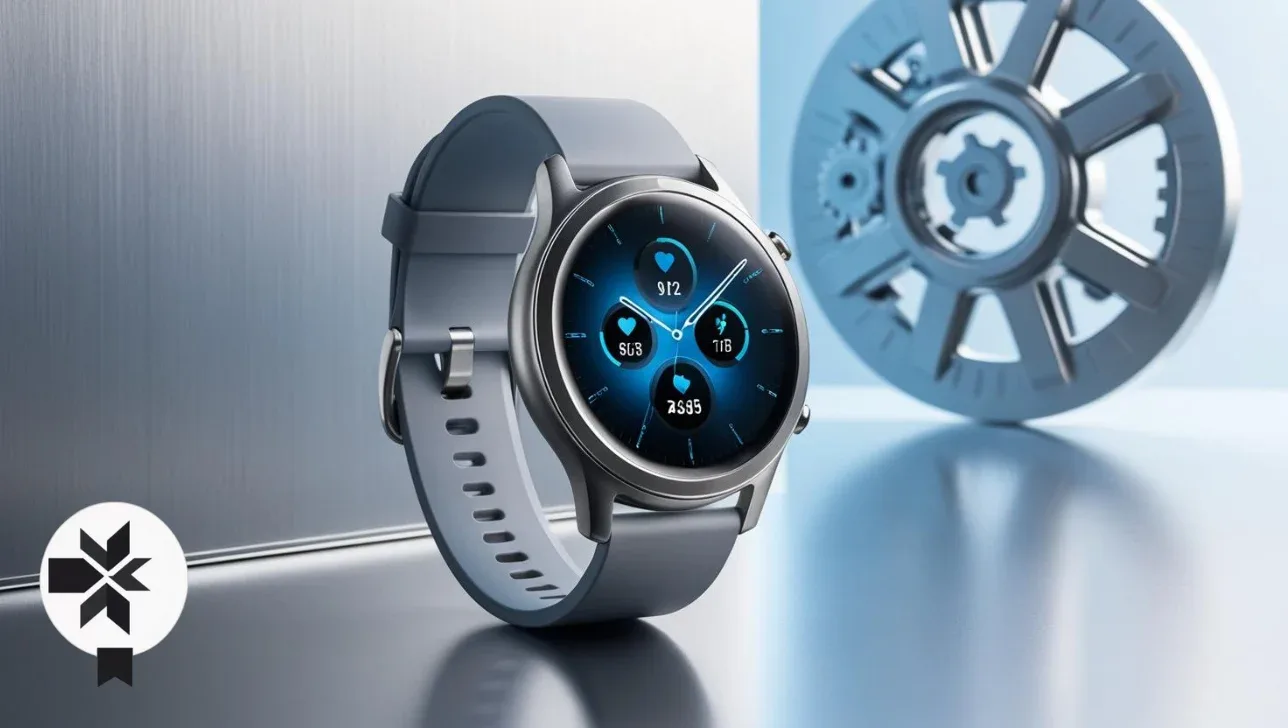Wearable technology has come a long way from simple fitness trackers to an innovative ecosystem reshaping health, fashion, and industrial processes. As this sector advances, emerging trends like smart fabrics, biometric monitoring, and wearables tailored for industrial applications are defining the future of wearables. If you are interested in how wearables devices are revolutionizing our life then read our post “How Wearables Are Revolutionizing Everyday Life: Smartwatches & AR.”
Let’s explore the cutting-edge innovations driving this transformation and how they’ll impact various facets of life.
Table of Contents
ToggleTextile-Based Wearables: The Next Generation of Smart Fabrics
Imagine wearing clothes that monitor your vitals, adapt to external conditions, and interact seamlessly with electronic devices. Textile-based wearables represent this exciting evolution where technology is embedded directly into fabrics, making them smarter without sacrificing comfort or style.
Key Innovations in Smart Fabrics
- E-textiles: Electrical components, such as sensors and conductive threads, are integrated into the fabric to track body activity and environmental factors.
- Responsive clothing: Garments capable of adjusting to body temperature or heart rate, offering athletes and patients real-time feedback on performance or health.
- Washable tech: One of the biggest advancements in recent years involves creating durable, machine-washable fabrics embedded with sensors.
Use Case Example: Researchers at MIT have developed fiber-based sensors woven into clothing that detect changes in posture and respiration, ideal for healthcare monitoring.
Industries Benefiting from Smart Fabrics
- Healthcare: Smart garments can monitor patients recovering from surgery or detect early warning signs of illness.
- Fitness: Wearable clothing tracks athletic performance, muscle fatigue, and hydration levels in real time.
- Military and defense: Tactical suits provide soldiers with data on biometrics, heat stress, and even hazardous chemical exposure.
Smart fabrics could soon replace traditional fitness gear, offering users a deeper understanding of their bodies with each workout or daily activity.
Biometric Wearables: Reading Your Body Like Never Before
Biometric wearables go beyond fitness tracking—they aim to deliver precise, actionable health data. Whether it’s monitoring heart rhythms, glucose levels, or mental stress, these devices can significantly improve preventive healthcare and personalized wellness plans. Read our cluster blog for “How Wearable Devices are Revolutionizing Personal Health & Wellness.”
What Makes Biometric Wearables Game-Changing?
Biometric wearables use advanced sensors to track the body’s internal signals with greater accuracy. They’re being designed for continuous monitoring, providing users and healthcare professionals with critical insights to prevent illnesses and improve overall well-being.
Breakthrough Technologies in Biometric Wearables
- ECG-enabled devices: Beyond simple heart rate tracking, modern devices like the Apple Watch feature electrocardiogram (ECG) sensors to detect arrhythmias.
- Glucose monitoring wearables: Companies like Abbott are developing continuous glucose monitors (CGMs) that allow diabetics to measure blood sugar levels without finger pricks.
- Mental health wearables: Emerging devices track stress, sleep cycles, and brainwave activity, helping users manage anxiety and optimize cognitive function.
Real-World Impact: In a clinical trial, patients using wearables for continuous cardiac monitoring saw a 60% reduction in emergency hospital visits due to early detection of irregularities.
What’s Next for Biometric Wearables?
Expect more non-invasive devices capable of detecting everything from hydration to blood oxygen saturation. Additionally, as machine learning improves, biometric wearables could predict health events before symptoms manifest, revolutionizing preventive care.
Wearables for Industry: Tech That Powers the Workforce
Industrial applications of wearable tech are quickly gaining traction as companies look for ways to boost worker safety, productivity, and efficiency. From smart helmets to exoskeletons, wearables designed for industrial settings are changing the way we work.
Top Industrial Wearable Solutions
- Augmented reality (AR) headsets: Devices like the Microsoft HoloLens provide workers with hands-free instructions, schematics, and real-time problem-solving capabilities.
- Smart safety vests: These wearables monitor environmental hazards (e.g., extreme heat, toxic gases) and send alerts to ensure worker safety.
- Exoskeletons: Designed to reduce physical strain, exoskeletons assist workers in heavy-lifting tasks and repetitive movements, preventing injuries.
Case Study: Construction giant Skanska implemented smart vests and AR headsets on multiple projects, reporting a 25% reduction in on-site injuries and a 15% increase in task efficiency.
Industries Driving Adoption
- Manufacturing: Workers equipped with AR glasses can inspect complex machinery and perform maintenance tasks more efficiently.
- Logistics and warehousing: Exoskeletons allow workers to lift heavier items safely and reduce fatigue during long shifts.
- Oil and gas: Wearables track worker health in hazardous environments and monitor gas leaks or other risks in real time.
Challenges and the Path Forward
Although industrial wearables have great potential, challenges like data security, ruggedness, and integration with existing systems remain. However, advancements in “5G Technology” and “IoT (Internet of Things)” integration will address these issues, allowing seamless communication between devices.
Why Wearable Tech Is the Future of Innovation
The future of wearable tech will be multifunctional, personalized, and deeply integrated into daily life. Textile-based wearables will merge comfort with performance, biometric devices will offer new levels of health monitoring, and industrial wearables will redefine worker safety and efficiency.
Key Takeaways
- For consumers: Expect wearables to go beyond fitness and convenience, offering life-saving insights and personalized health interventions.
- For industries: Wearable tech will become a critical tool for operational efficiency and worker well-being, bridging physical tasks with digital data.
As wearable technology continues to evolve, it won’t just track our movements or habits—it will empower us to live smarter, healthier, and safer lives.
Are you ready to embrace the future of wearable tech in your life or business? The time to explore its potential is now.
Conclusion:
Wearable tech is evolving from simple gadgets to essential tools in health, industry, and daily life. Smart fabrics, biometric monitoring, and industrial wearables are driving innovation, offering enhanced performance, personalized health insights, and improved workplace safety. As technology advances, wearables will seamlessly integrate into our lives, boosting convenience, productivity, and well-being. The future is wearable—are you ready to embrace it?






